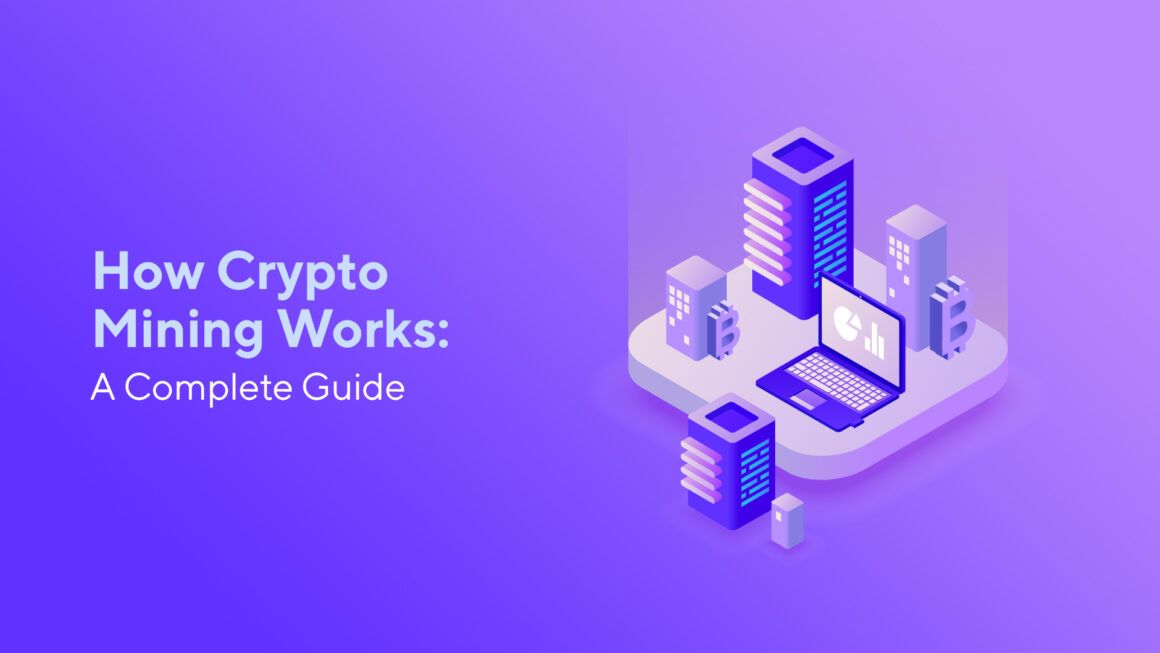Bitcoin mining has become more and more popular in recent years. As a result, it’s becoming more and more difficult to actually make a profit from Bitcoin mining. On the one hand, a lot of users are trying to make a profit with Bitcoin mining. While on the other hand, there are a lot of people who even don’t have a clue about how crypto mining works. Today, we’re about to find out!
Although the price of a Bitcoin isn’t as high as it was at the end of 2017 before a burst of a crypto bubble, many users still see Bitcoin mining as a way to make a profit that takes very little time.
Crypto mining how it works? What important aspects you should think about? Theoretically, you just make your computing power available and then wait until a bitcoin is discovered. Congratulations, you’re a few dollars richer! In practice, however, as is often the case, it looks a bit different. In the meantime it has become difficult to actually make a profit from mining, and not just for technical reasons.
The question then arises, whether it’s still worth mining bitcoin using computing power, or a ship has sailed. This bitcoin mining review should provide an insight into how mining crypto works. Just keep reading to find out!
How Web Crypto Mining Works: Are There Any Risks?
How does crypto mining works? Bitcoin is based on a so-called blockchain. Due to the fact that coins are traded via the Bitcoin network, it must be possible to find and process these transactions. You shouldn’t think of Bitcoin as a classic currency that is issued by a bank or a country.
We can say that an entire community that trades bitcoins is its own bank. Here is the main idea of how web crypto mining works — users trade a cryptocurrency. But at the same time, it’s necessary to make sure that transactions made are verified in order to ensure that a coin has actually changed hands. The Bitcoin network achieves this by collecting all transactions of a certain period and putting them together in a list. Such a list is called a ‘block’. The blockchain, therefore, represents nothing less than a network of stored transaction lists.
All transactions must, therefore, be entered in this blockchain. Now, however, the Bitcoin network isn’t a bank that has a department responsible for documenting the transactions made.
This is where a bitcoin miner comes into play. A miner is responsible for confirming transactions and entering them in a relevant block. He/she makes his/hew computing power available for this process. For this, a miner receives payment in bitcoins, which is financed by a transaction fee for bitcoin trading.
You could say that a bitcoin miner takes on administrative tasks. It ensures that every transaction is traceable and can be viewed at any time afterward. Every time a block is ‘finished’, i.e. a certain period of time has passed, miners start their work and verify every single transaction in this block.
At the same time, there is a place for a so-called cryptojacking. It’s the unauthorized use of someone else’s laptop to mine cryptocurrency. Usually, hackers do this by getting a victim to click on a malicious link in an email sent — this is how crypto mining malware works.
How Crypto Coin Mining Works: Hashes & Blockchain
How crypto coin mining works? How can miners confirm that the transactions made in this block are consistent? Let’s try to find out!
If a block period has expired, the information on all Bitcoin purchases during this period is checked. A checksum is obtained, which is called a ‘hash’, via mathematical processes, that in turn require computing power. A so-called hash guarantees the authenticity of transactions in this block.
A hash contains all of the information in a block in a highly abbreviated and encrypted form. Each hash is unique and consists of letters and numbers. When the hash of a block is completed, it’s pinned to the end of the blockchain. What is remarkable here is that information from the hash of the previous block is also included in the hash so that the blocks cannot be manipulated.
A hash thus always confirms that not only the current block, but also the previous one is valid. These hashes ensure that all blocks, and thus all previous transactions, are valid. And this is how crypto mining works.
Every time a hash is done, miners get a reward in bitcoins. Generating a hash from a block isn’t particularly difficult for a computer. That’s why the Bitcoin network was designed in such a way that it becomes more difficult to mine new bitcoins with every bitcoin mined.
Bitcoin mining, therefore, fulfills an important function — it ensures that transactions made are verified and saved. Due to encryption in the form of hashes, the actual trading partners of a transaction can no longer be identified. Miners receive a reward for this task. That’s it. Now you know how crypto mining works.
Just share your thoughts in the comments if you have something to add!

Leave a Reply